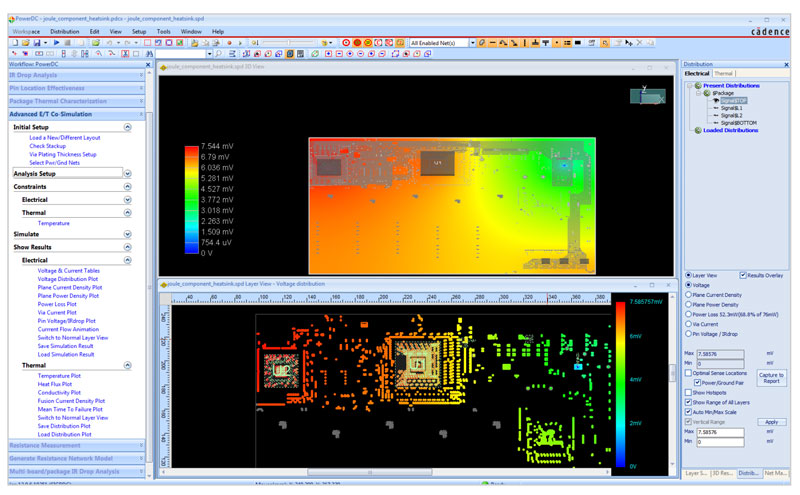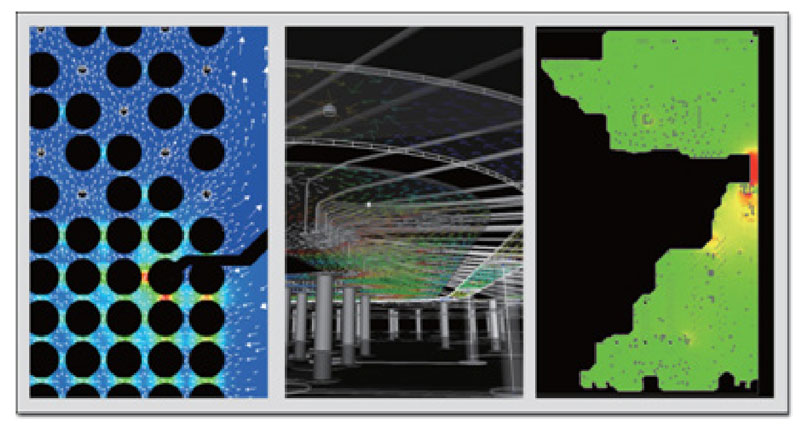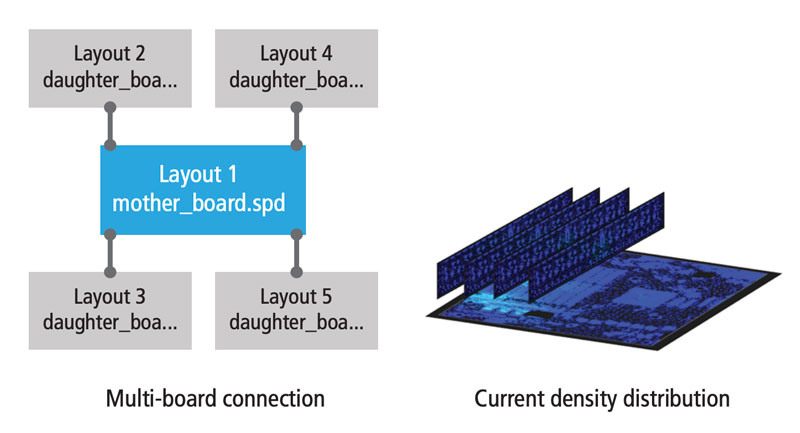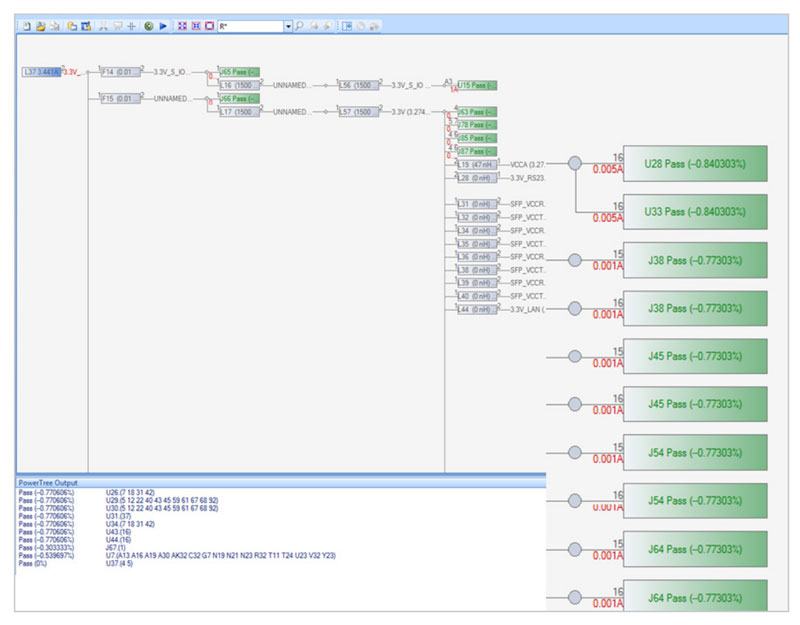Datasheet
Celsius PowerDC
DC and thermal analysis for packages and boards
The Cadence Celsius PowerDC environment provides fast and accurate DC analysis for IC packages and PCBs along with thermal analysis that also supports electrical and thermal co-simulation. Targeting both pre- and post-layout applications, the Celsius PowerDC approach enables you to quickly identify IR drop, current density, and thermal issues that are among the leading field failure risks. Powerful features, including sense line location optimization and simplified design-rule checker (DRC) confirmation, work in concert with the fastest available simulation to support design improvements without excess cost and schedule impacts.
Overview
Features
Electrical and thermal co-simulation
Powerful electrical simulation is combined with thermal distribution analysis in an automated environment that iterates on the vital interactions between current flow and temperature. This maximizes accuracy and fully considers effects such as the increasing electrical resistance that occurs at higher operating temperatures. This unified environment makes it easy for you to confirm that your design has met specified voltage and temperature thresholds, without having to spend significant effort sorting out difficult-to-judge impacts. The Celsius PowerDC environment incorporates a task-focused workflow tuned for DC and thermal analysis. You can bring in design data from popular PCB and IC package layout systems, and you’ll be guided through straightforward simulation set-up steps. A range of reporting and visualization options simplify issue identification, and interactive geometry editing enables what-if consideration of design improvement options.
Managing system-level IR drop
With voltage levels dropping and current requirements rising, accurate IR drop analysis is a critical step for today’s high-performance designs. Design teams that effectively manage DC loss are able to achieve required tolerances of 5% and less. They are also rewarded with welcome additional room to achieve AC noise margins. Rapid Celsius PowerDC simulations provide accurate results that take complex plane geometries and multiple voltage domains into account. Results are flexibly displayed, and post-layout DRC confirmation is provided.
Optimizing voltage regulator module (VRM) settings
Adding a VRM remote sense at the right spot helps avoid IR drop by detecting changes in current load and compensating for it. Celsius PowerDC technology provides single-step automation for the intelligent selection of the ideal VRM sense line location. This yields a margin improvement of 10% or more when compared with seemingly reasonable alternative placements. The Celsius PowerDC environment automatically balances current levels, supports grouping of multiple VRMs, and guides you as you increase VRM nominal output voltage to the maximum safe level of compensation.
Realistic assessment of critical structures
Designs today often include fewer layers, along with higher component, via, and routing densities that combine to reduce the area for power nets. Realistically, planes are not solid but include cutouts and Swiss cheese via fields. Spreadsheet estimations and simple DC and thermal tools are only helpful if margins are ample. Complex designs with multiple sinks, various voltage levels, and irregular plane structures demand highly accurate approaches to avoid field failures such as vias that act like fuses and thermal stress in areas that neck down or have dynamic plane cuts. The Celsius PowerDC environment accurately simulates the behavior of materials from die attach to copper and important structures such as wirebonds. The electrical/ thermal co-simulation takes accuracy to an even higher level by simultaneously converging on combined current and temperature impacts.
Multi-structure analysis
Multi-structure analysis provides an intuitive and easy way to perform electrical or electrical/thermal co-simulation for a multi-board system. After the analysis, all detailed results of each block are integrated into a single signoff report. This capability simplifies the setup process and reduces the analysis time, making the DC analysis of a complicated system a practical requirement for your signoff methodology.




